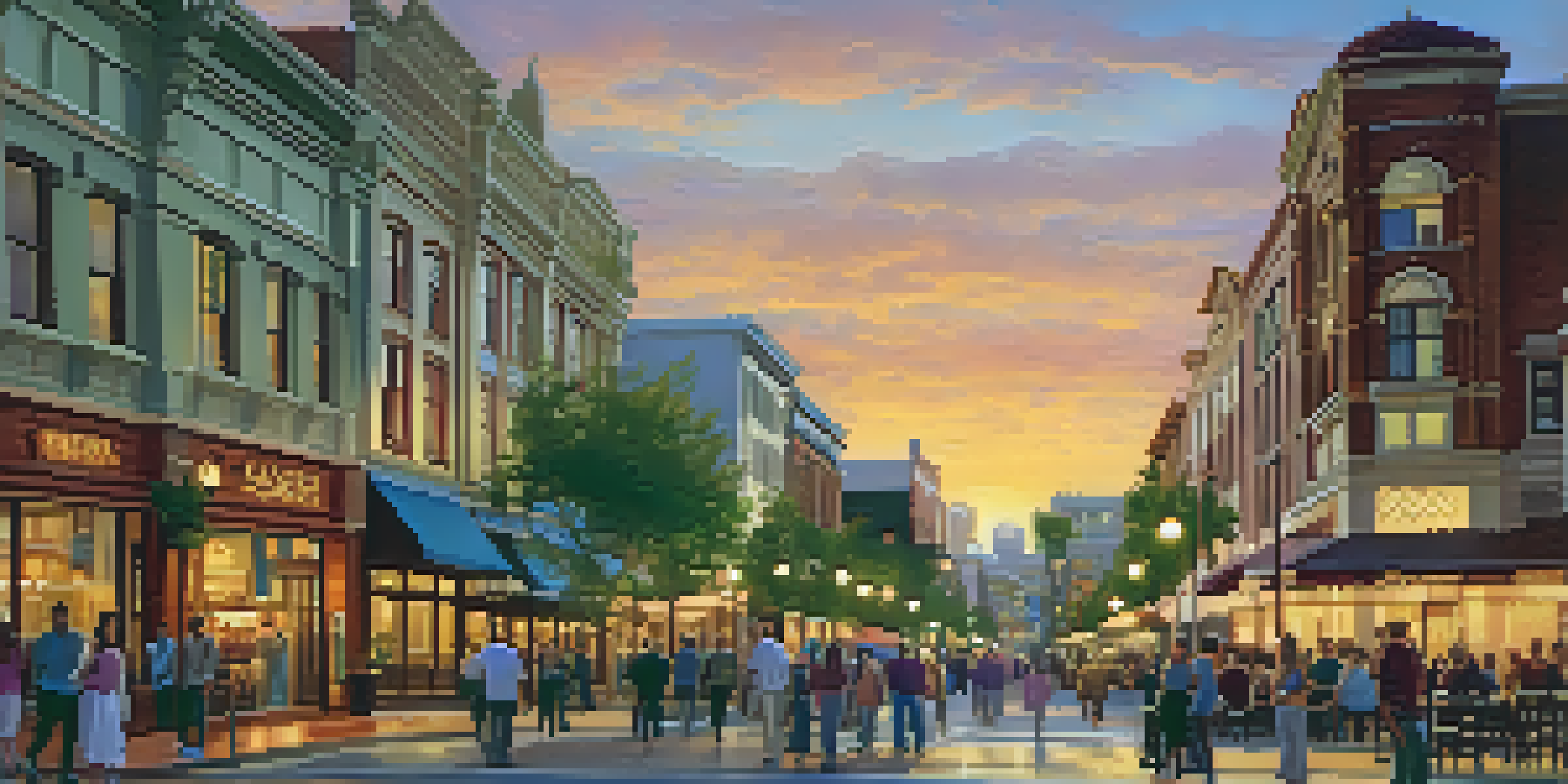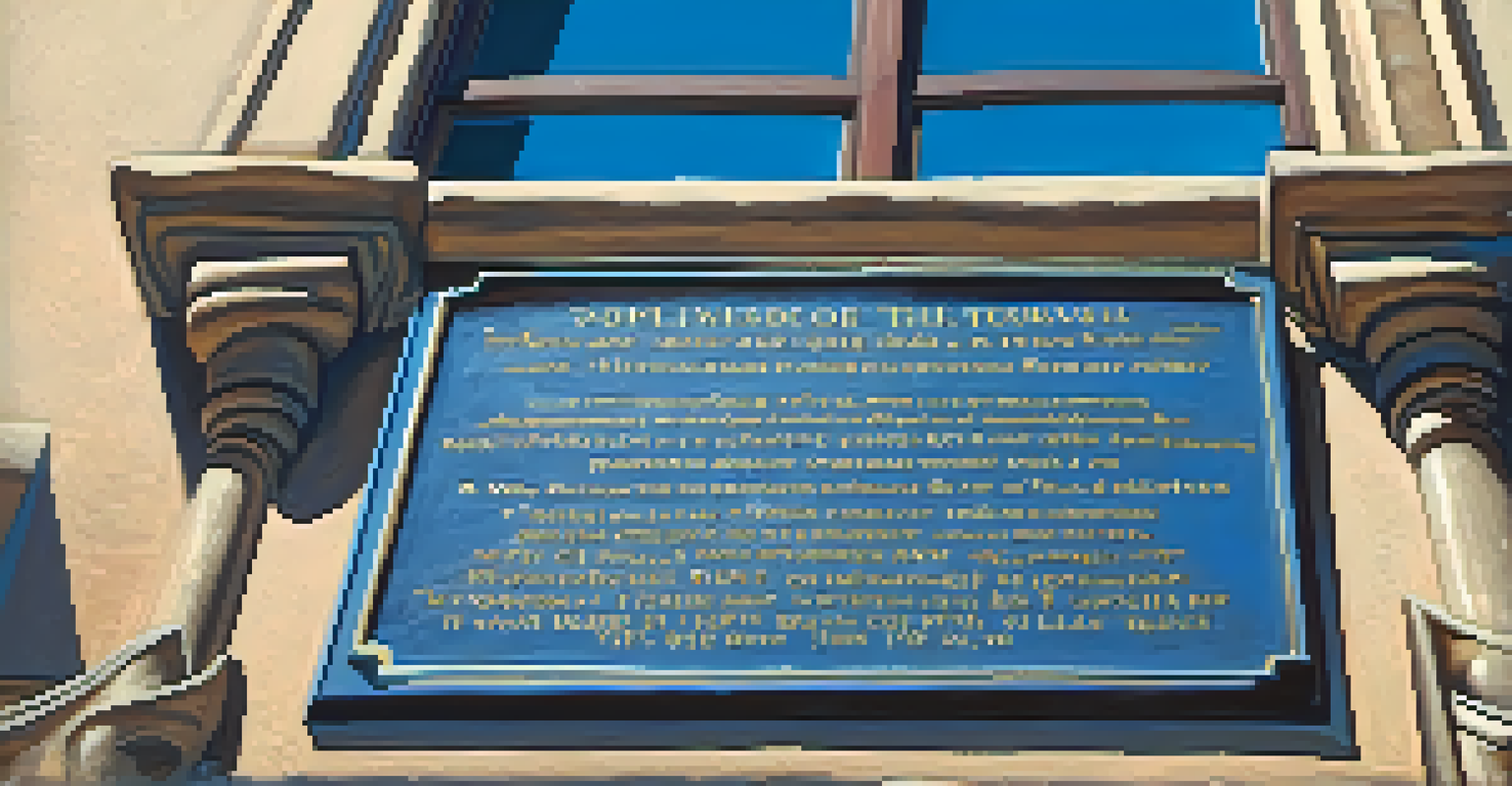Key Legislation Supporting Historic Preservation in San Diego

Understanding Historic Preservation in San Diego
Historic preservation in San Diego plays a vital role in maintaining the city's unique character. It involves protecting landmarks, neighborhoods, and sites that have significant cultural and historical value. This effort not only preserves the past but also enhances the quality of life for residents and attracts visitors.
Preservation is a form of optimism; it is a belief that there is value in the past, and that it can inform our future.
The importance of historic preservation can be seen in how it fosters community pride and promotes local heritage. By recognizing and protecting historical sites, San Diego honors the stories and events that shaped its identity. This is particularly relevant in a city characterized by diverse cultures and histories.
Moreover, preserving historic sites contributes to sustainable development. It often involves reusing existing structures rather than building anew, thereby reducing environmental impact. This approach aligns with modern sustainability goals while keeping the city's history alive.
The National Historic Preservation Act of 1966
One of the cornerstones of historic preservation in the United States is the National Historic Preservation Act (NHPA) of 1966. This federal legislation established a framework for protecting historic sites and has a significant impact on San Diego. It encourages states and local governments to create their own preservation programs.

The NHPA led to the creation of the National Register of Historic Places, which recognizes and honors sites of national significance. In San Diego, many landmarks, such as the Gaslamp Quarter, have been listed, ensuring they receive protection and recognition. This designation helps raise awareness about the importance of preserving these sites.
Preserving San Diego's Unique Heritage
Historic preservation enhances community pride and maintains the cultural identity of San Diego.
Additionally, the NHPA provides financial incentives for preservation through grants and tax credits. These resources can be crucial for local communities seeking to maintain their historical sites. By securing funding, San Diego can continue to invest in preserving its rich heritage.
California’s Historic Preservation Laws
California has its own set of laws that bolster historic preservation efforts, with the California Environmental Quality Act (CEQA) playing a vital role. CEQA requires state and local agencies to consider the environmental impacts of their projects, including effects on historic resources. This means that any development project in San Diego must assess its potential impact on historical sites.
History is not just what happened; it is how we remember it—and how we preserve it.
In addition to CEQA, the California Register of Historical Resources serves as a tool for local jurisdictions to identify and protect significant sites. This state-level register works in tandem with the National Register, ensuring that local treasures receive the attention they deserve. It encourages communities in San Diego to recognize and celebrate their historic places.
Moreover, California law allows local governments to establish their own preservation ordinances. These ordinances can provide stricter regulations than state or federal laws, giving cities like San Diego more control over their historical resources. This flexibility helps tailor preservation efforts to the unique needs of the community.
The City of San Diego's Preservation Ordinance
In 1986, San Diego enacted its own Historic Preservation Ordinance, which is a critical local tool for safeguarding the city’s historic resources. This ordinance establishes criteria for designating historic sites and provides a framework for their protection. By localizing preservation efforts, the city can respond more effectively to the needs of its communities.
The ordinance also created the Historical Resources Board, which reviews nominations for historic designations and oversees preservation efforts. This board plays a crucial role in ensuring that significant sites are recognized and protected. Their work helps to maintain the authenticity of San Diego's historical narrative.
Legal Framework Supports Preservation
The National Historic Preservation Act and California laws provide essential guidelines and incentives for safeguarding historic sites.
Moreover, the ordinance allows for a streamlined process for property owners seeking to restore or maintain historic properties. This can include financial incentives, technical assistance, and guidance on best practices for preservation. By supporting homeowners and businesses, San Diego fosters a collaborative approach to historic preservation.
The Mills Act: Incentives for Preservation
The Mills Act is a powerful tool that promotes historic preservation in San Diego by providing property tax relief to owners of designated historic properties. Under this act, property owners can enter into a contract with the city, committing to maintain their historic structures in exchange for reduced taxes. This financial incentive encourages the preservation of valuable historic resources.
In San Diego, the Mills Act has been instrumental in revitalizing neighborhoods and encouraging property owners to invest in restoration projects. This not only helps maintain the character of the community but also enhances property values. As more owners take advantage of this program, the city’s historic fabric strengthens.
Furthermore, the Mills Act fosters a sense of stewardship among property owners. By committing to preserve their homes or businesses, owners become active participants in the preservation movement. This creates a shared responsibility to uphold the city’s heritage, benefiting both current residents and future generations.
Community Involvement in Historic Preservation
Community involvement is essential in the realm of historic preservation, as it encourages residents to take an active role in safeguarding their neighborhoods. San Diego has several advocacy groups and organizations that promote awareness and education about local heritage. These groups often organize events and initiatives to engage the public and foster appreciation for historic sites.
Additionally, public participation is a cornerstone of the preservation process in San Diego. Residents are encouraged to voice their opinions on proposed developments that may affect historic resources. This involvement ensures that the community's values and interests are considered, leading to more informed decision-making.
Community Engagement is Key
Active community involvement ensures that local voices are heard in the preservation process, fostering a shared commitment to heritage.
Through workshops, meetings, and outreach programs, local organizations empower residents with the knowledge and tools they need to advocate for preservation. This grassroots approach not only strengthens community bonds but also amplifies the voices of those who cherish San Diego’s unique history.
Challenges Facing Historic Preservation in San Diego
Despite the robust legal framework supporting historic preservation in San Diego, challenges remain. One significant issue is the pressure of development, as the city continues to grow and evolve. New construction can threaten historical sites, leading to conflicts between economic growth and preservation efforts.
Another challenge is the limited funding available for preservation projects. While there are incentives like the Mills Act, not all historic property owners can afford the costs associated with restoration and maintenance. This financial burden can lead to neglect, putting the future of these historic resources at risk.

Furthermore, public awareness and education about the importance of preservation can be inconsistent. Many residents may not fully understand the value of maintaining historic sites, which can hinder advocacy efforts. Addressing these challenges requires ongoing commitment and collaboration among stakeholders.
The Future of Historic Preservation in San Diego
Looking ahead, the future of historic preservation in San Diego hinges on continued community engagement and advocacy. As the city grows, it will be crucial for residents to remain vigilant and proactive in protecting their historic resources. This can involve participating in local meetings, supporting preservation initiatives, and advocating for stronger regulations.
Additionally, embracing new technologies can enhance preservation efforts. Innovative tools, such as digital mapping and online databases, can help track and promote historic sites, making it easier for residents and visitors to appreciate San Diego’s heritage. These advancements can also facilitate better communication among preservation advocates.
Ultimately, the success of historic preservation in San Diego will rely on a shared commitment from the community, local government, and organizations. By working together, they can ensure that the city’s rich history is preserved for future generations to enjoy and learn from.